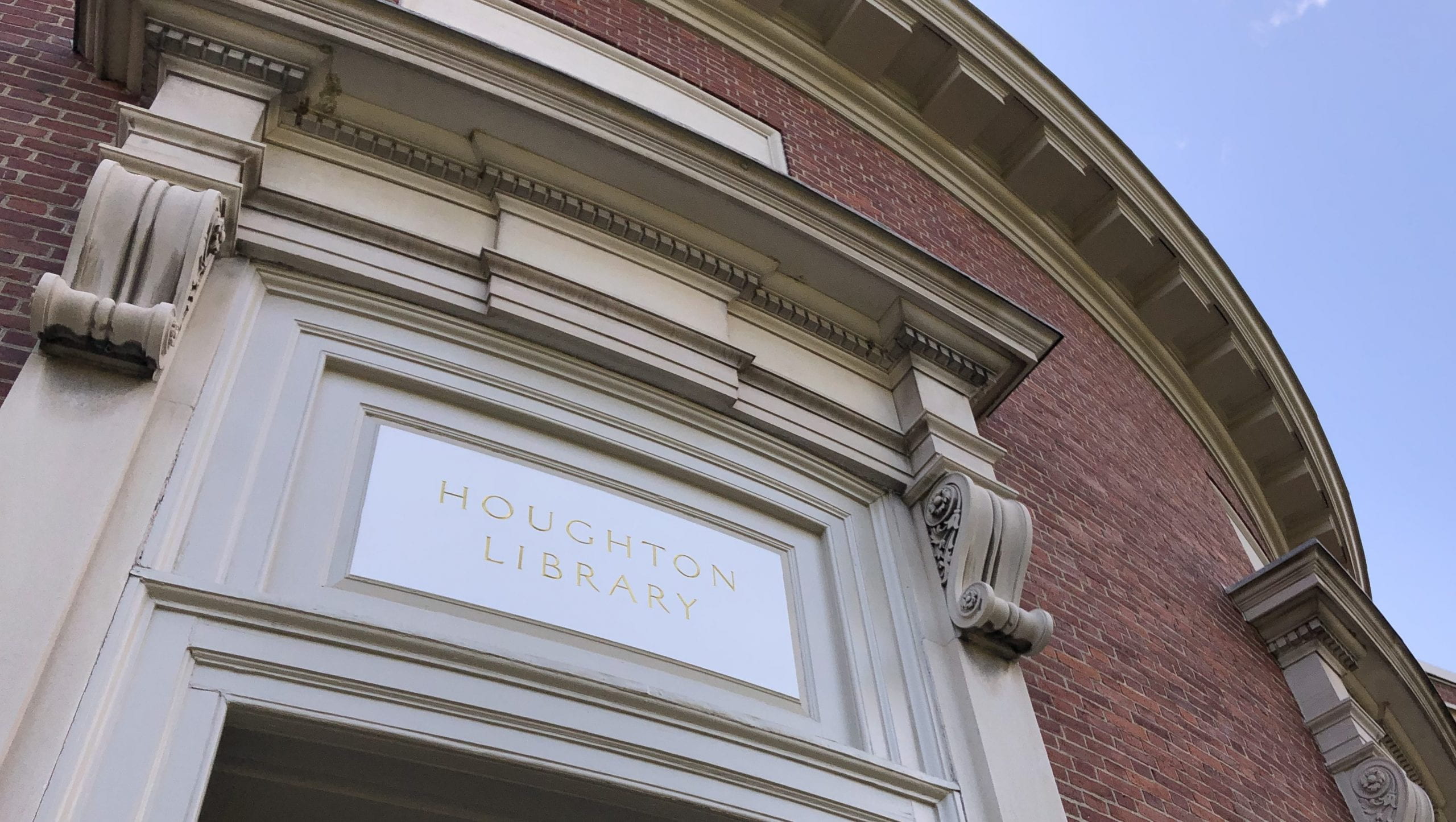By Michael Austin, Manuscript Cataloger, Houghton Library
The Castañé collection, donated to Houghton Library in 2015 by Spanish businessman and collector José María Castañé, comprises over 10,000 items documenting the major conflicts of the 20th century involving European powers. Papers, photographs, and realia from the Second World War are most strongly represented, followed by material from the First World War, the Russian Revolution and Civil War, and the Spanish Civil War, along with a smaller amount from the conflicts in Korea and Vietnam. The collection contains documents in over two dozen languages, with the bulk in English, French, German, Spanish, and Russian. Cataloged in subsets corresponding to genre and format, it is a treasure of immense importance, both for the serious scholar of 20th-century history and for the more casual researcher.
I cataloged most of the collection, with the exception of the Russian-language material. In the 10 years that I’ve worked at Houghton Library, I’ve never seen a collection quite like it in terms of scope and variety. This post will be the first in a series of eight highlighting papers and objects that struck me as especially compelling as I went through them. I’ll begin by describing a few artifacts from the Second World War, with subsequent posts on the Korean conflict and the Spanish Civil War.
One of the largest—and most sobering—categories of material is the miscellaneous documents such as ID cards, work permits, and other personal records issued by the Nazi government to civilians, POWs, and concentration camp victims in occupied territories. Many of us are familiar with Faulkner’s famous dictum, “The past is never dead. It’s not even past.” If ever a single object could drive that point home, for me it would be the ration card for woolen clothing issued to a Polish girl named Nina Więcierz, two or three years old, in the city of Łódź (renamed Litzmannstadt by the Nazis), probably around 1941-1942.
As a cataloger, I see hundreds of unique items every year, many of great monetary value, and I confess that over time I’ve become a bit blasé about the embarrassment of riches held by Houghton Library. However, this fragile piece of paper, one of millions that the Nazi regime produced, brought a lump to my throat. It allowed a young child to have a winter coat, or a hat, or mittens—items that might make the difference between life or death in a brutal eastern European winter. As I cataloged the card, a swarm of questions crowded my mind: Who was Nina Więcierz? Was she Jewish? Did she survive the war? If so, what was her life like afterwards?

Nina was by far the youngest person for whom we have a ration card; however, Houghton has a dozen or so others that document the rationing of clothes, food, and similar necessities. I was surprised to find a Nazi permit issued to a Polish man allowing him to own a horse—until I remembered, of course, that horses in that time and place were considered vital war materiel.
The Castañé collection also contains a small number of identity badges: visual markers made of fabric bearing a symbol, word, or letter that non-Aryans and other “undesirables” were compelled to wear in areas under Nazi control. These were typically either armbands or patches sewn onto coats or other outerwear. Concentration camps had a particularly elaborate system of badges, whereby a prisoner’s background could be immediately identified. In addition to the Star of David marking Jews, for example, pink triangles designated LGBTQ individuals and prisoners considered sex offenders by the Nazis, and green triangles were for common criminals.
One type of prisoner enjoyed ambiguous privileges in the camps: this was the “Kapo.” Chosen by SS administrators from the prison population, Kapos were often hardened criminals, and frequently violent ones. They were tasked with maintaining discipline among the prisoners and fulfilling work quotas—jobs that they typically performed with the utmost brutality. In return for their services, they were spared hard labor and were allowed private rooms, civilian clothing, cigarettes, alcohol, and better food. However, some Kapos were drawn from the ranks of political prisoners; they were more inclined, when possible, to help their fellow inmates rather than to carry out the orders of the SS. Incidentally, it’s interesting to note that the large numbers of Kapos—upwards of 10% of the prisoner population—allowed the Nazis to maintain control of the camps with relatively few guards.

We have no evidence regarding the identity of the individual who wore the armband that came to Houghton. The thing itself is unremarkable: a small rectangle of cotton, no more than 4 by 8 inches folded, dirty and yellowed with wear, with the word “KAPO” crudely stamped in black. It was almost certainly made in one of the camps itself. However, as with the ration card, one can practically feel the history emanating from this ephemeral piece of fabric.
These items are only two of the hundreds of others like them that fill the collection, along with letters from concentration-camp prisoners, money orders sent to them by family members, and camp “banknotes.” Together they form a constellation of artifacts showing how the German bureaucracy carried out the demonic aims of the Nazi leadership in those parts of Europe under its control. As difficult as it was for me emotionally, at times, to handle this material as I worked through and cataloged it, I can say that I’m proud to have helped bring it to light and made it accessible. This is the goal of library service.
In our next post on the Castañé Collection, I’ll be taking a look at another fascinating category from the collection: photograph albums compiled in the field by German and Allied military personal in various campaigns of the Second World War.
